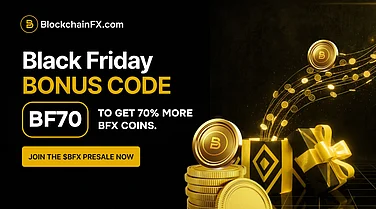Blockchain technology, once the sole preserve of Bitcoin, is today an enormous ecosystem based on altcoins that count into the thousands—altcoins that do not live in Bitcoin's shadow. These cryptocurrencies have revolutionized our perspective, application, and adoption of blockchain in our daily lives. So how are altcoins introducing blockchain into mainstream technology?
In this article, we’ll explore how altcoins foster innovation, accessibility, and real-world adoption, turning blockchain from a niche financial concept into a foundational element of the modern digital economy.
What Are Altcoins?
Altcoins, short for “alternative coins,” refer to all cryptocurrencies other than Bitcoin. While Bitcoin remains the first and most recognized cryptocurrency, altcoins have emerged to address its limitations—offering faster transactions, enhanced privacy, lower costs, and broader use cases.
Some of the most popular ones are:
Ethereum (ETH) – Powered dApps and smart contracts.
Ripple (XRP) – Allows cheap, fast cross-border payments.
Cardano (ADA) – Focusing on security and scalability by peer-reviewed research.
Polkadot (DOT) – Allows several blockchains to communicate so that they may talk to one another.
Solana (SOL) – Famous for low-cost and fast transactions.
All of these projects, and many others, combined brought blockchain out of peer-to-peer transactions. Chainbreakers.
How Altcoins Drive Mainstream Blockchain Adoption
1. Beyond Bitcoin Innovation
Bitcoin tested the concept of decentralized money, but altcoins pushed the limits of what blockchain is capable of doing.
Altcoin innovations are:
Smart Contracts: Altcoins like Ethereum enable devs to write decentralized applications (dApps) that eliminate middlemen.
DeFi (Decentralized Finance): Altcoins enable a bank-less financial system operating 24/7.
NFTs and Gaming: Tokens such as Flow and Polygon power digital collectible issuance and exchange, and gaming assets.
These uses demonstrate blockchain's extent going beyond cryptocurrency, with businesses, investors, and developers attracted to them.
2. Lower Barriers to Entry
The major objective of altcoins is to render blockchain cheaper and more attainable.
Lower Transaction Fees: Alts such as Litecoin and Stellar have lower transaction fees compared to Bitcoin.
Higher Confirmations: Solana and Avalanche enable almost instantaneous settlement.
Energy Efficiency: Proof-of-Stake altcoins consume much less energy, thereby going green.
These technologies bring blockchain to impinge on mass consumers, small businesses, and developers, leading to adoption in numerous industries.
3. Increased Real-World Adoption
Altcoins bring blockchain technology to real-world issues in a wide range of industries:
Finance: Ripple (XRP) enables banks and institutions to make cross-border payments.
Supply Chain: VeChain enables supply chain visibility and product tracking.
Healthcare: Projects like MediBloc decentralize and encrypt patient information.
Energy: Power Ledger makes it possible to trade green energy peer-to-peer.
All the projects demonstrate that blockchain is no longer a theory—it is real and it has practical applications.
4. Fostering Competition and Collaboration
Diversity of altcoins brings healthy competition among the blockchain community. The competition keeps the projects innovative, improves the performance, and constructs interoperable systems.
For instance:
Polkadot and Cosmos are designed for cross-chain compatibility so that various blockchains can communicate with each other.
Layer-2 altcoins (like Polygon) scale up Ethereum's capability, handling millions of daily users.
Competition makes one efficient, and coordination constructs a single digital infrastructure—both essential for mainstream adoption.
5. Governmental and Institutional Interest
Altcoins broadening the use case of blockchain attracted institutions and governments.
Central Bank Digital Currencies (CBDCs): Stablecoin-driven, the majority of countries are developing national digital currencies.
Enterprise Blockchain Solutions: IBM, Visa, and Microsoft apply blockchain technology to altcoins to offer greater security and transparency.
Regulatory Frameworks: Regulators have been pushed to develop better regulations with the success of altcoins, giving legitimacy to the whole crypto space.
It increases public trust and confidence, the drivers of mass adoption.
6. Creating Global Communities
Social interaction drives altcoin users' social economy. An estimated tens of millions of users engage in open forum discussion, governance voting, and innovation contests from community neighborhoods to global events.
It is this ownership and engagement that leads to pull effect in learning about blockchain, investments in projects, and pushing learning—naturally driving blockchain adoption into mainstream.
7. Education and Awareness by Altcoin Ecosystems
Most altcoin projects organize educational courses for literacy in blockchain. Simplifying complex stuff and incentivizing (e.g., token reward), they encourage more people to learn and invest in blockchain technology.
Examples:
Learn-to-Earn schemes on sites like Coinbase.
Grants for finance developer blockchain-startups.
Open-source platforms that foster collaboration and the nurturing of talent.
Education makes blockchain adoption knowledge-based and long-term, and less hype-based.
Advantages of Altcoins in Mainstream Adoption
Altcoins drive blockchain adoption by innovation and flexibility. Here is a quick summary:
Use Cases: In finance, gaming, etc., they unlock the maximum capability of blockchain.
Scalability: Certain altcoins make transaction speed and fee easy.
Usability: Onboarding networks onboard new users into crypto.
Sustainability: Low-energy consensus algorithms become popular among environmentally friendly users.
Community Involvement: Open governance and community engagement build trust.
Strengths Altcoins Need to Overcome
Altcoins are at the heart of blockchain innovation, but some challenges persist:
Regulatory Uncertainty: Country-to-country regulations, and no one knows what next.
Security Risks: Not all that glitters is gold; hacks and scams persist.
Market Volatility: Fluctuating price moves.
Fragmentation: Too many projects can result in an absence of standardization.
Unfortunately, the plus far exceeds the minus—and especially when the ecosystem is mature.
The Future of Altcoins and Blockchain Adoption
Altcoins have a great future. With blockchain extending from cryptocurrency to other technologies like AI, IoT, and Web3, altcoins will power digital identity, ownership, and finance. Altcoins will power mass adoption of blockchain with more innovation, improved regulation, and institutional investment.
Frequently Asked Questions (FAQs)
1. What are altcoins?
Altcoins are other cryptos aside from Bitcoin. Altcoins are utilized for alternative purposes, including smart contracts, decentralized applications, and faster payments.
2. How do altcoins differ from Bitcoin?
Bitcoin is committed to being a payment system and store of value, whereas altcoins are exploring other utilities such as interoperability, governance, NFTs, and decentralized finance.
3. Why are altcoins significant in blockchain adoption?
They increase application potential, lower fees, speed up transactions, and get blockchain mainstream and available to everyone—getting blockchain mainstream and available to everyone.
4. Is altcoin a bad investment?
Yes, a few of them are poorly managed or regulated. Adequate research into the fundamentals, team, and longer-term strategy behind each project is required before investing.
5. Which altcoins have the most mainstream appeal?
The best altcoins are Ethereum, Cardano, Solana, and Polkadot due to the strong ecosystems, enormous developer bases, and utility use cases.
Conclusion
Altcoins are not merely Bitcoin substitutes—altcoins are the principle to mass adoption of blockchain. By enabling innovation, openness, and usability, altcoins have turned blockchain into a revolutionary technology. As it continues to move forward by leaps and bounds each day, the world will witness more and more ways in which digital assets such as these will revolutionize industries, empower communities, and redefine what the future of technology and finance holds.




















